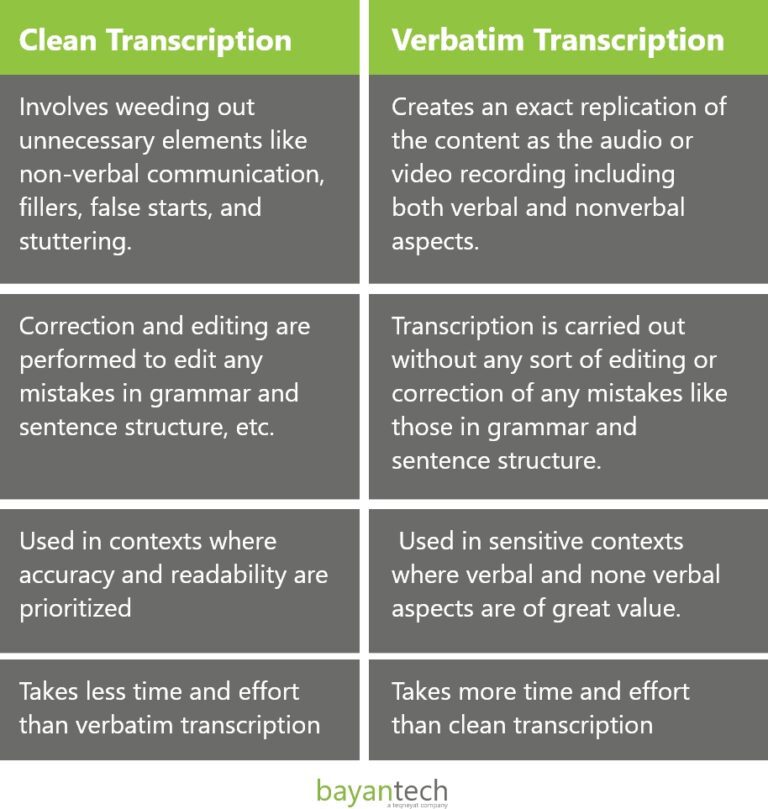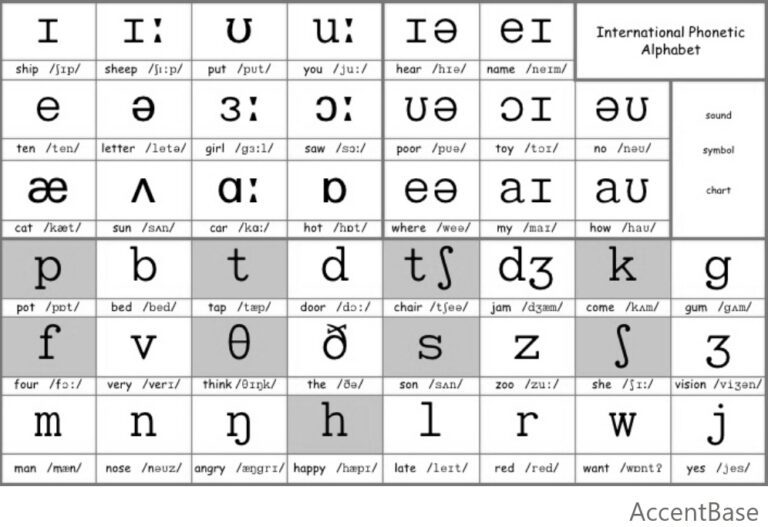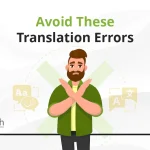Transcription has been put into practice for centuries. It is one of the most ancient forms of documentation that dates back to 3400 BCE in ancient Egypt where it was used to document the laws provided orally by kings and queens.
And today, in the modern world, things aren’t much different.
Businesses are now leveraging audio and videos in their digital marketing strategies as an easier and more effective means to communicate their messages to their target audience. And multilingual transcription services have helped boost their reach to meet the needs of multilingual audiences worldwide. It has also enabled recording, sharing, and translating audio and video content easily.
Curious to know how transcription services work, why they are important to consider, and how to get the most out of them? This blog post will guide you through everything you need to know about multilingual transcription services.
Ready to get started?
Let’s dive in.
Table of contents
Multilingual transcription services are language services that enable the systematic conversion of recorded speech in audio or video formats into a written form to create transcripts and captions. They are now an integral part of many industries, assisting businesses, non-profit corporations, and government agencies to keep their important information professionally documented or maximize their business impact.
In the legal industry, for example, court and insurance transcription are two highly on-demand services. Court transcription is used to keep court hearings documented in a text format to ensure easier accessibility while insurance transcription is used to detect fraud as it is easier to do so with written files than audio and video files.
The medical industry also relies heavily on transcription services to convert medical reports from an audio format into a written one to obtain written records of patients’ clinical histories.
On the other hand, transcription is often used in the media and entertainment as well as education industries to provide heard-of-hearing and deaf people easy access to audio and video content. It is also used to facilitate comprehension for multilingual learners.
Let us have a quick look at the transcription market size in the US to give you an overview of how big it is now and to what extent it is expected to grow in the near future.
The US Transcription Market: Size & Forecast
Opting for multilingual transcription services to maintain readable records of audio and video content is highly increasing in every area of the world. In the US for example, Grand View Research has reported that the transcription market size was valued at USD 25.98 billion in 2022. It is even expected to expand at a compound annual growth rate (CAGR) of 5.8% from 2023 to 2030.
In fact, multilingual transcription is a broad term. There are different types and methods of transcription, each serving a different purpose, and choosing between them will depend on your needs. Let us have a quick look at them to help you gain insight into the type of multilingual transcription service you might need.

Types of Multilingual Transcription Services
Verbatim Transcription
Verbatim transcription, also called true or strict verbatim transcription, is a word-to-word conversion of spoken speech into a textual form.
It captures both the verbal and non-verbal components of the audio or video content being transcribed. By non-verbal components, we refer to elements like the following:
- Stutters
- False starts
- Filler words (e.g. uh, um, ah, etc.)
- Pauses
- Background noise
- Interjections
- Non-speech sounds(e.g. laughter, throat clearing, coughing, etc.)
This type of transcription remains completely faithful to the original language and flow of speech to the extent that the transcribed text becomes an exact replication of the content recorded in the audio or video.
And since, in this type of transcription, the transcribers have to write down literally everything they listen to, grammatical mistakes should never be corrected or edited. Let us see an example:

In this example, the verb “post” is left without any sort of correction. You can also notice that non-verbal elements like “[laughs]” and fillers like “uh” are included in the transcribed text.
This type of transcription is still required in certain contexts like police investigations and legal proceedings, where it is important to document both the verbal and non-verbal elements. This is because, in contexts like these, the speakers’ reactions and manners are always of much value.
Clean Verbatim Transcription
In clean or edited transcription, the transcriber performs a filtering process that weeds out any elements deemed unnecessary for the overall meaning. And unlike true verbatim transcription, editing and correction are integral parts of the clean transcription process.
The priority here is to deliver a high-quality document and maintain that balance between completeness and readability. Repeated sentences and phrases, for instance, are omitted from transcription as well as all non-verbal elements like fillers and false starts.
The whole process results in a more formal version of the content that is more concise and easier to read.
As you can see in this example, the verb tense error in “post” has been corrected. Also, fillers like “uh,” references to non-verbal sounds like “laughing” and repeated words like “Facebook” have been removed because they add no value to the text.
While cleaning up all these unnecessary elements, the essence of the content is never altered. What the transcriber actually does is a little bit of polishing the content to meet certain purposes.
Clean transcription is very popular with audio or video recording content that is meant to be translated or published later on. It is also commonly used in academic seminars and professional conferences where more concise content is required.

- Intelligent Transcription
Intelligent transcription is a little bit similar to clean transcription except that more freedom is allowed to transcribers.
They can edit and remove off-topic sentences and non-standard or non-existent words, any instances that can be irrelevant to the subject matter, as well as any fillers and false starts. They can additionally rephrase complex sentences and restructure sentences grammatically.
The main purpose of intelligent transcription is to communicate meaning in the most natural way possible. Most importantly, it should deliver the core of what has been discussed in the final transcribed document. It, therefore, offers a more concise and straightforward transcription that still maintains the essence of the original content.
This type of transcription is commonly used in the business and medical fields where important information and the meaning of what has been said are of more value to the reader than the exact wording.
- Phonetic Transcription
As the name suggests, phonetic transcription is the conversion of spoken words in audio or video files into their discrete sounds using the standardized International Phonetic Alphabet (IPA).

The main goal here is to represent the words the way they are originally pronounced in the language to help those who can read IPA understand how the word can be correctly pronounced.
Wondering for what purpose this type of transcription can be used? In fact, phonetic transcription becomes very important in situations where dialectical divergences and pronunciation changes are evident.
Sometimes one word can be pronounced differently according to divergences in accents. For example, while “schedule” is phonetically transcribed as “/ˈʃedʒ.uːl/” in British English, it is transcribed as “/ˈskedʒ.uːl/” in American English.
Additionally, some words change in pronunciation over time. For example, a long time ago, the second syllable of the word “quandary” used to be stressed in pronunciation. Now, the word is used with the first syllable being stressed instead.
Whenever you need to draw attention to such changes, phonetic transcription will be a good option.
AI Transcription vs Human Transcription

- AI Transcription
AI transcription refers to relying completely on artificial intelligence tools to perform the transcription process and convert the content of video and audio files into text.
AI transcription has been proven to be a great option when it comes to speed, cost-effectiveness, and scalability.
But, yes there’s a but! It has not achieved the desired results in terms of quality.
Many challenges make it very difficult for an AI transcription tool to provide an accurate transcript of audio recordings. Such challenges include background noise, accented speech as well as the technical issues the tool might run into during the transcription process.
- Human Transcription
Human transcription, on the other hand, fills in the gaps that AI can leave behind.
As expected, human transcription has proven to be more accurate. This is because expert native transcribers can easily handle most of the challenges that AI transcription tools fail to overcome like divergences in accents or dialects.
But, unfortunately, the possibility of human error still exists, and that is why choosing a professional transcription and translation agency is a must to ensure receiving high-quality multilingual transcription services that avoid any sort of potential errors.
Also, speed is another drawback of human transcription which is actually more time-consuming compared to AI transcription. This might actually cause human transcription services to be less suitable for businesses that prioritize faster turnaround times over quality and accuracy.
Sign up to our newsletter to receive the latest blogs and news.
4 Key Benefits of Multilingual Transcription Services
- 1. Maintaining Legal Compliance
Investing in multilingual transcription services is crucial for your business to meet legal requirements like those of The Americans with Disabilities Act (ADA). This act ensures that people with disability can easily access each and every service, product, or content their healthy counterparts can, including the internet and any type of content available on it.
For your content to be accessible for those people and, hence, ADA compliant, an alternative that offers equivalent information should be provided. In this case, transcription can be an alternative way for deaf as well as hard-of-hearing people to get information in a format that is not audio-dependent.
- 2. Increasing Accessibility
According to The World Health Organization, over 5% of the world’s population, or 430 million people, suffer from loss of hearing, and this number is estimated to reach 700 million people by 2050. Can you imagine the huge portion of potential audience you will be losing if you do not provide a transcript for your audio or video content?
By utilizing multilingual transcription services, you broaden your audience base and make your hard-of-hearing or deaf audience feel more inclusive. And with this, you are fostering brand loyalty and trust.
- 3. Saving More Time
Imagine being forced to listen to a two-hour recorded meeting to find one piece of information uttered in 2 or 3 seconds. Transcription is a real time-saving when it comes to providing easy, and, most importantly, quick access to information included in any audio or video files.
Having a transcript in hand, you can search for the word, phrase, or sentence you are looking for and find it literally in a blink of an eye. It makes it much easier to refer back to the content of your audio or video without the need to listen to them all over again.
If you are a lawyer, for example, getting court hearings, video and audio evidence, and witness statements transcribed will save you a lot of time when trying to access any of the information included in them.
- 4. Facilitating Translation
For businesses that need translation for audio and video recordings, using transcription services is a must-have. With larger audio and video files, it is very hard and time-consuming to translate audio content as opposed to written content.
When you already have your content transcribed by a professional transcriber, you are taking the first step toward translation. The translation process then becomes much easier to perform, and your audio content becomes more accessible in multiple target languages.
A Guide To The Insurance Transcription Process
Are you looking for Insurance Transcription Services? Want to learn more about how the process goes? Get our FREE to the 5-step transcription process for your insurance business.3 Common Transcription Errors: What They Are And Why They Happen
We know that AI transcription involves several accuracy issues attributed to factors that are clear to everyone. But the question here is what kind of errors might a human transcriber make and why?
Unprofessional transcribers who lack the necessary skills and expertise required to perform high-quality transcription services are prone to making a substantial number of errors. And, such errors can compromise the accessibility and usability of the transcript.
We can notice that the difference between human and AI errors is that human flaws can be easily avoided by working with expert, well-trained transcribers, unlike AI errors which can hardly be avoided.
Now, let us have a look at some of the common transcription errors and understand why transcribers fall into them.
According to Blake D. Poland’s review of Brantford’s study of transcription quality, some of the most common errors transcriptionists make include omissions, sentence structure errors, and mistaking words and phrases for others.
- 1. Omissions
Omissions are very common to occur during the transcription process.
The act of going backward and forward in an audiotape to listen to a certain part more than once, which is something transcribers always do, usually results in the omission of certain parts that get lost in between. This is because most transcribers are not likely to pick up exactly where they left off.
For example, in one of the audio recordings Poland checked for his review, he encountered an omission mistake that the transcriber committed while working on the audio file.
He found that the sentence “I lost a very close friend to cancer” should have been read “I lost a very close friend to lung cancer” but the word “lung” was missed along the process. You might think that this is not very significant, but when you know that such an error occurred in a study on smoking cessation, you will understand how a very tiny piece of information can make a difference.
- 2. Sentence Structure Errors
According to Poland, transcribers often face difficulty in using the correct sentence structure because the sentence concept actually does not exist in oral speech.
This is why transcribers are always stuck in the dilemma of where to end a sentence and start a second one. And the main problem here lies in using punctuation appropriately. This is because the incorrect use of commas and periods can completely alter the intended meaning.
“I don’t like it, you know, I don’t” does not imply the same meaning as “I don’t like it. You know I don’t.” The use of inserter commas in the first sentence implies that the addressee does not know that the speaker “does not like it.” However, the way the second sentence is punctuated implies that the addressee already knows that the speaker “does not like it”
Although the intended meaning can be understood from the intonation in the recorded audio, not getting it right in the transcript can be problematic.
- 3. Mistaking Words And Phrases For Others
Mistaking words and phrases for others that do not make any sense in the given context is also very common in transcription.
This error most probably occurs due to problems of poor audio quality. It also happens when handling files that involve people speaking in different dialects and accents that the transcriber is not very familiar with.
For example, in a medical context, “sickle cell” was mistaken for “sick as hell” when transcribing the phrase “History of sickle cell disease,” which makes no sense.
All of these mistakes are not impossible to avoid in the multilingual transcription services you request. A professional transcription service can offer you an accurate and flawless end result. By giving you access to professional transcribers who are native to the languages involved and implementing a rigorous quality assurance process, accuracy, clarity, and high quality can be guaranteed.
bayantech for High-quality Multilingual Transcription Services
If quality is your top priority, partnering with a professional multilingual transcription service provider can easily grant you this. Expert audio transcription companies will give you access to a combination of the best of human expertise and the most advanced transcription technology.
Don’t know how to find a professional transcription agency for your upcoming transcription project? Look no further than bayantech.
bayantech has been a leading professional translation services provider and the multilingual transcription services company of choice for more than two decades. Being strictly committed to our ISO 9001 and ISO 17100 certification standards, we offer our clients world-class quality services that meet their global business objectives.
At bayantech, our professional multilingual transcription services are powered by native transcribers who are well-versed in handling different dialects and accents as well as all cultural-specific aspects that might be challenging for the transcription process. Our tech-savvy professionals can make the most of audio and video transcription AI tools that can make a huge difference when coupled with their exceptional linguistic expertise.
Contact us today, bayantech’s dedicated account managers are ready to discuss your upcoming transcription project. We guarantee that our transcription and transcript translation services will meet all your business needs. You can also get free translation services quote easily on our website.










